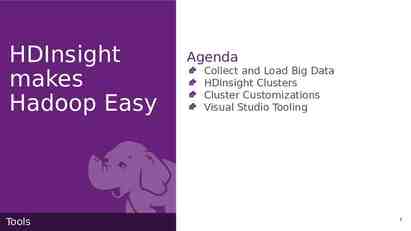CSE 332: Data Structures and Parallelism Fall 2022 Richard
33 Slides377.44 KB

CSE 332: Data Structures and Parallelism Fall 2022 Richard Anderson Lecture 19: Introduction to Parallelism 11/14/2022 CSE 332 1

Course Schedule Lectures 1- 16: Traditional Data Structures Lectures 17-18: Intro to Graphs Lectures 19-21: Parallelism Lectures 22-23: Concurrency Lectures 24-27: Graph Algorithms Lectures 28-29: Theory of NP-Completeness 11/14/2022 CSE 332 2

Announcements Read parallel computing notes by Dan Grossman 2.1-3.4 Midterm – Stats: Median – 72, Mean 70.8, SD 15.7 Projects – Project 3 – Parallel Implementation of Bellman-Ford algorithm 11/14/2022 CSE 332 3

Sequential Summation Sum up N numbers in an array – Complexity? 11/14/2022 CSE 332 4

Parallel Sum Sum up N numbers in an array – with two processors 11/14/2022 CSE 332 5

Parallel Sum Sum up N numbers in an array – with ten processors 11/14/2022 CSE 332 6

Parallel Sum Sum up N numbers in an array – with N processors? 11/14/2022 CSE 332 7

Parallel Sum Sum up N numbers in an array Complexity? How many processors? Faster with infinite processors? 11/14/2022 CSE 332 8

Parallel Algorithms So far, we have assumed: One thing happens at a time What if we want to implement algorithms with multiple “processors” – How do we model parallel computing – How do we program parallel computers 11/14/2022 CSE 332 9

Parallel Computation There is nothing new about parallel computation Hardware design and architecture have always been about parallelism – Parallelism has been central to computer performance Parallel algorithms have been an area of study since the late 1970s Hardware trends – Multiple cores in processors – Can no longer make components smaller to make them faster – need to make more of them 11/14/2022 CSE 332 10

Who Implements Parallelism User Application Operating System Programming Language, Compiler Algorithm Processor Hardware 11/14/2022 CSE 332 11

Parallelism vs. Concurrency Parallelism: Use extra resources to solve a problem faster 11/14/2022 Concurrency: Manage access to shared resources work requests resources resource CSE 332 12

Shared Memory with Threads Old story: A running program has – One program counter (current statement executing) – One call stack (with each stack frame holding local variables) – Objects in the heap created by memory allocation (i.e., new) (nothing to do with data structure called a heap) – Static fields New story: – A set of threads, each with its own program counter & call stack No access to another thread’s local variables – Threads can share static fields / objects To communicate, write values to some shared location that another thread reads from 11/14/2022 CSE 332 13

Old Story: one call stack, one pc Heap for all objects and static fields Call stack with local variables pc determines current statement local variables are numbers/null or heap references pc 0x 11/14/2022 CSE 332 14 14

New Story: Shared Memory with Threads Heap for all objects and static fields, shared by all threads Threads, each with own unshared call stack and “program counter” pc 0x pc 0x pc 0x 11/14/2022 CSE 332 15

Other models We will focus on shared memory, but you should know several other models exist and have their own advantages (see notes) Synchronous Shared Memory: Processors execute same instructions and access shared memory Message-passing: Each thread has its own collection of objects. Communication is via explicitly sending/receiving messages Dataflow: Programmers write programs in terms of a DAG. A node executes after all of its predecessors in the graph Data parallelism: Have primitives for things like “apply function to every element of an array in parallel” 11/14/2022 CSE 332 16

Our Needs To write a shared-memory parallel program, need new primitives from a programming language or library Ways to create and run multiple things at once – Let’s call these things threads Ways for threads to share memory – Often just have threads with references to the same objects Ways for threads to coordinate (a.k.a. synchronize) – For now, a way for one thread to wait for another to finish – Other primitives when we study concurrency 11/14/2022 CSE 332 17

Threads vs. Processors What happens if you start 5 threads on a machine with only 4 processors? 11/14/2022 CSE 332 18

Threads vs. Processors For sum operation: – with 3 processors available, using 4 threads would take 50% more time than 3 threads 11/14/2022 CSE 332 19

Fork-Join Parallelism 1. Define thread – Java: define subclass of java.lang.Thread, override run 2. Fork: instantiate a thread and start executing – Java: create thread object, call start() 3. Join: wait for thread to terminate – Java: call join() method, which returns when thread finishes Above uses basic thread library build into Java Later we’ll introduce a better ForkJoin Java library designed for parallel programming 11/14/2022 CSE 332 20

Sum with Threads For starters: have 4 threads simultaneously sum one quarter of the array ans0 ans1 ans2 ans3 ans – – – – 11/14/2022 Create 4 thread objects, each given one quarter of the array Call start() on each thread object to run it in parallel Wait for threads to finish using join() Add together their 4 answers for the final result CSE 332 21

Part 1: define thread class class SumThread extends java.lang.Thread { int lo; // fields, passed to constructor int hi; // so threads know what to do. int[] arr; int ans 0; // result SumThread(int[] a, int l, int h) { lo l; hi h; arr a; } } public void run() { //override must have this type for(int i lo; i hi; i ) ans arr[i]; } Because we must override a no-arguments/no-result run, we use fields to communicate across threads 11/14/2022 CSE 332 22

Part 2: sum routine int sum(int[] arr){// can be a static method int len arr.length; int ans 0; SumThread[] ts new SumThread[4]; for(int i 0; i 4; i ){// do parallel computations ts[i] new SumThread(arr,i*len/4,(i 1)*len/4); ts[i].start(); } for(int i 0; i 4; i ) { // combine results ts[i].join(); // wait for helper to finish! ans ts[i].ans; } return ans; } 11/14/2022 CSE 332 23

Parameterizing by number of threads int sum(int[] arr, int numTs){ int ans 0; SumThread[] ts new SumThread[numTs]; for(int i 0; i numTs; i ){ ts[i] new SumThread(arr,(i*arr.length)/numTs, ((i 1)*arr.length)/numTs); ts[i].start(); } for(int i 0; i numTs; i ) { ts[i].join(); ans ts[i].ans; } return ans; } 11/14/2022 CSE 332 24

Recall: Parallel Sum Sum up N numbers in an array Let’s implement this with threads. 11/14/2022 CSE 332 25

Code looks something like this (using Java Threads) class SumThread extends java.lang.Thread { int lo; int hi; int[] arr; // fields to know what to do int ans 0; // result The key is to do thea, result-combining in { parallel SumThread(int[] int l, int h) } as well public void recursive run(){ divide-and-conquer // override – And using makes this natural if(hi – lo SEQUENTIAL CUTOFF) – Easier to write and more asymptotically! for(int i lo; i efficient hi; i ) ans arr[i]; else { SumThread left new SumThread(arr,lo,(hi lo)/2); SumThread right new SumThread(arr,(hi lo)/2,hi); left.start(); right.start(); left.join(); // don’t move this up a line – why? right.join(); ans left.ans right.ans; } } } int sum(int[] arr){ // just make one thread! SumThread t new SumThread(arr,0,arr.length); t.run(); return t.ans; }11/14/2022 CSE 332 26

Recursive problem decomposition Thread: sum range [0,10) Thread: sum range [0,5) Thread: sum range [0,2) Thread: sum range [0,1) (return arr[0]) Thread: sum range [1,2) (return arr[1]) add results from two helper threads Thread: sum range [2,5) Thread: sum range [2,3) (return arr[2]) Thread: sum range [3,5) Thread: sum range [3,4) (return arr[3]) Thread: sum range [4,5) (return arr[4]) add results from two helper threads add results from two helper threads add results from two helper threads Thread: sum range [5,10) Thread: sum range [5,7) Thread: sum range [5,6) (return arr[5]) Thread: sum range [6,7) (return arr[6]) add results from two helper threads Thread: sum range [7,10) Thread: sum range [7,8) (return arr[7]) Thread: sum range [8,10) Thread: sum range [8,9) (return arr[8]) Thread: sum range [9,10) (return arr[9]) add results from two helper threads add results from two helper threads add results from two helper threads 11/14/2022 CSE 332 27

Divide-and-conquer Same approach useful for many problems beyond sum – If you have enough processors, total time O(log n) – Next lecture: study reality of P n processors Will write all our parallel algorithms in this style – But using a special fork-join library engineered for this style Takes care of scheduling the computation well – Often relies on operations being associative (like ) 11/14/2022 CSE 332 28

Thread Overhead Creating and managing threads incurs cost Two optimizations: 1. Use a sequential cutoff, typically around 500-1000 Eliminates lots of tiny threads 2. Do not create two recursive threads; create one thread and do the other piece of work “yourself” 11/14/2022 Cuts the number of threads created by another 2x CSE 332 29

Half the threads! order of last 4 lines Is critical – why? // wasteful: don’t SumThread left SumThread right // better: do!! SumThread left SumThread right left.start(); right.start(); left.start(); right.run(); left.join(); right.join(); ans left.ans right.ans; 11/14/2022 Note: run is a normal function call! execution won’t continue until we are done with run left.join(); // no right.join needed ans left.ans right.ans; CSE 332 30

Better Java Thread Library Even with all this care, Java’s threads are too “heavyweight” – Constant factors, especially space overhead – Creating 20,000 Java threads just a bad idea The ForkJoin Framework is designed to meet the needs of divideand-conquer fork-join parallelism – In the Java 8 standard libraries – Section will focus on pragmatics/logistics – Similar libraries available for other languages C/C : Cilk (inventors), Intel’s Thread Building Blocks C#: Task Parallel Library 11/14/2022 CSE 332 31

Different terms, same basic idea To use the ForkJoin Framework: A little standard set-up code (e.g., create a ForkJoinPool) Don’t subclass Thread Do subclass RecursiveTask V Don’t override run Do override compute Do not use an ans field Do return a V from compute Don’t call start Do call fork Don’t just call join Do call join (which returns answer) Don’t call run to hand-optimize Do call compute to hand-optimize Don’t have a topmost call to run Do create a pool and call invoke See the web page for (linked in to project 3 description): “A Beginner’s Introduction to the ForkJoin Framework” 11/14/2022 CSE 332 32

Fork Join Framework Version: (missing imports) class SumArray extends RecursiveTask Integer { int lo; int hi; int[] arr; // fields to know what to do SumArray(int[] a, int l, int h) { } protected Integer compute(){// return answer if(hi – lo SEQUENTIAL CUTOFF) { int ans 0; // local var, not a field for(int i lo; i hi; i ) ans arr[i]; return ans; } else { SumArray left new SumArray(arr,lo,(hi lo)/2); SumArray right new SumArray(arr,(hi lo)/2,hi); left.fork(); // fork a thread and calls compute int rightAns right.compute();//call compute directly int leftAns left.join(); // get result from left return leftAns rightAns; } } } static final ForkJoinPool fjPool new ForkJoinPool(); int sum(int[] arr){ return fjPool.invoke(new SumArray(arr,0,arr.length)); // invoke returns the value compute returns } 11/14/2022 CSE 332 33






